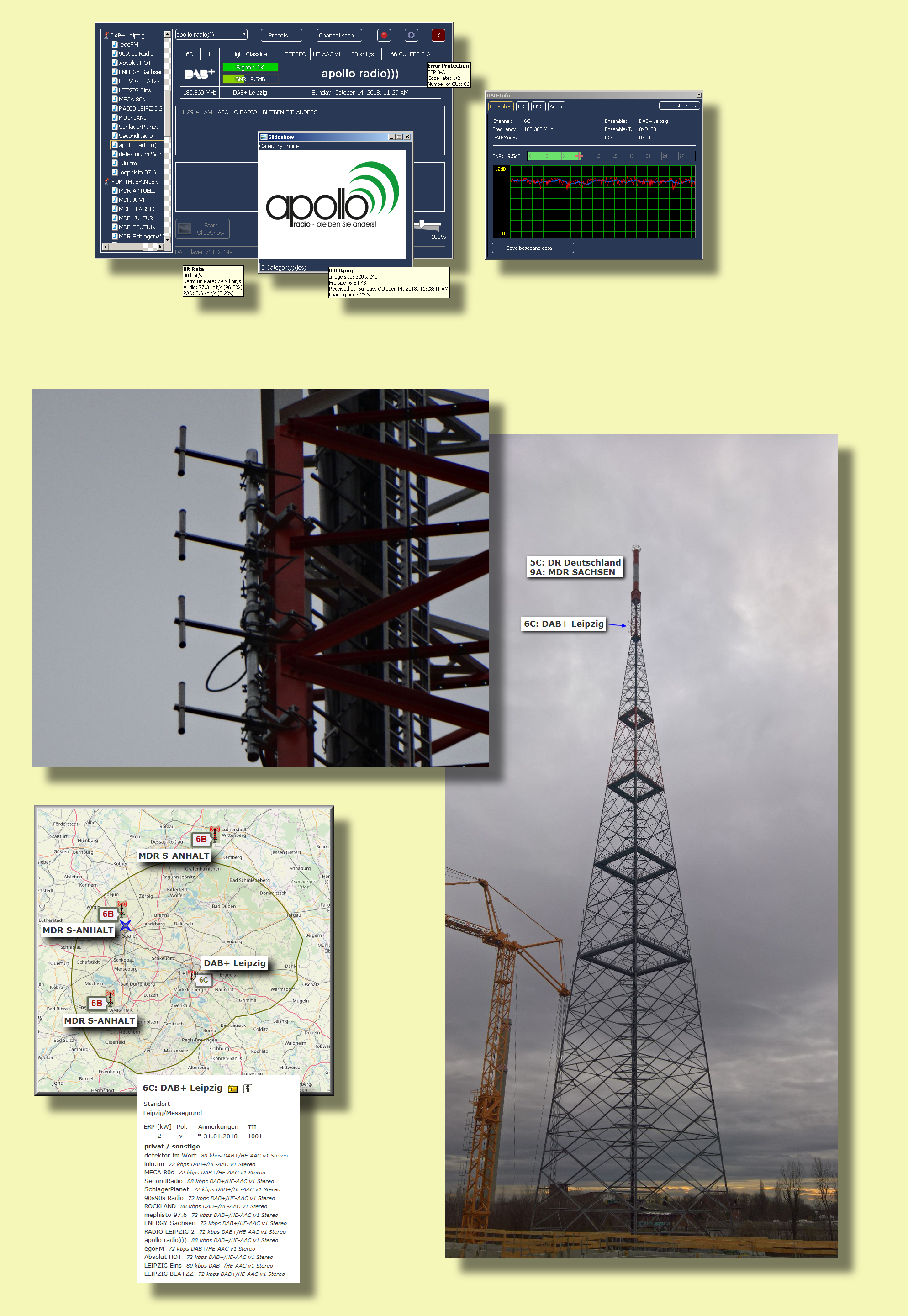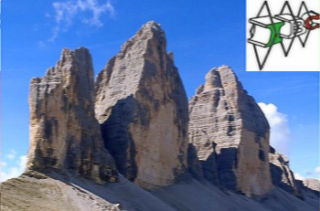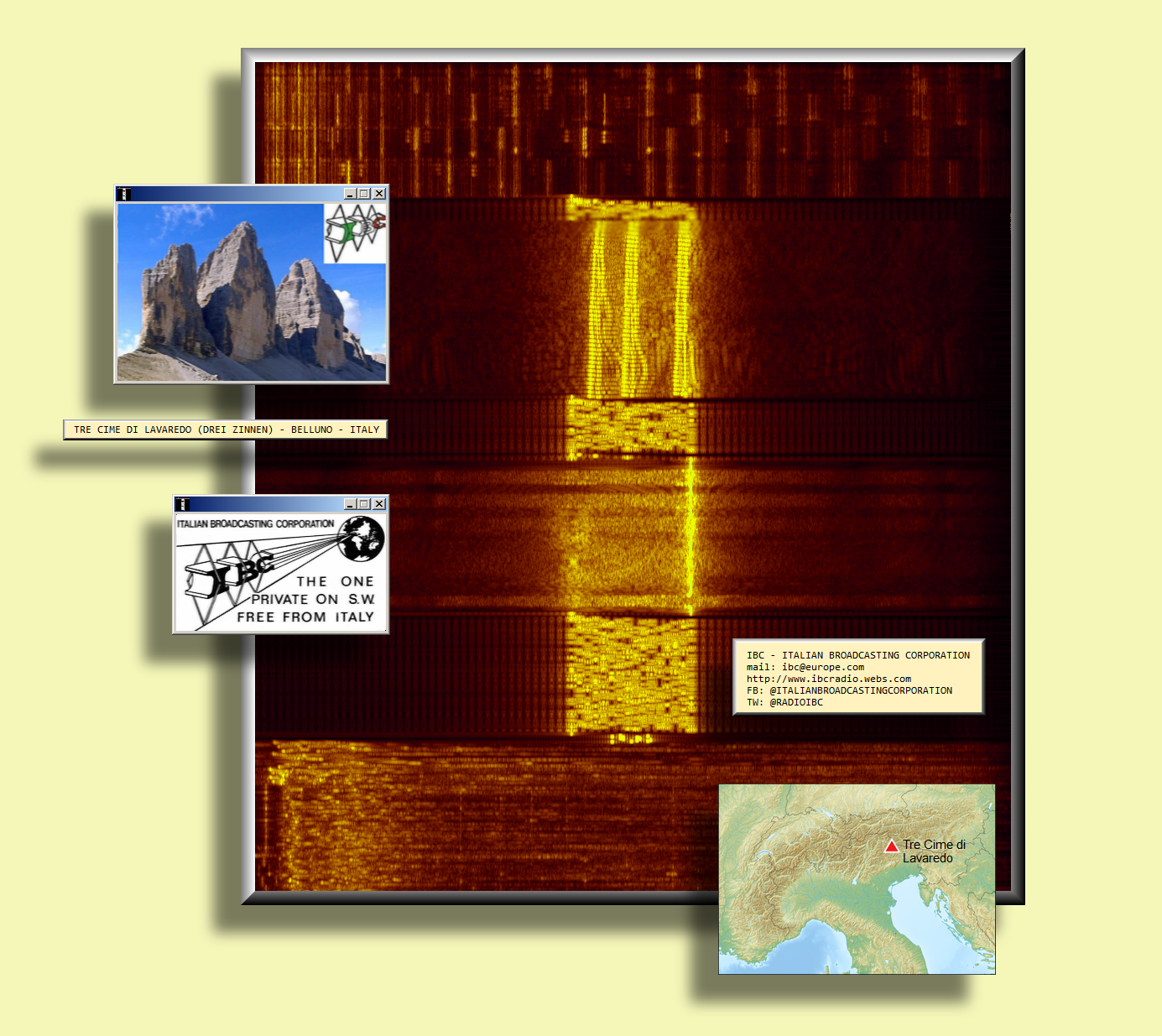http://www.rhci-online.net/radiogram/radiogram.htm


|
RSID: <<2018- 10-13T15:30Z
MFSK-32 @
9400000+1500>>
Here in the USA, if you want to buy a Ford, it will have to be an
SUV or a truck -- or a Mustang.
Sedans and compacts, such as this Fiesta, go away after the 2019
model year ...
Sending Pic:148x83C;

https://bit.ly/2yp7svV
Please report decode to
themightykbc@gmail.com
|
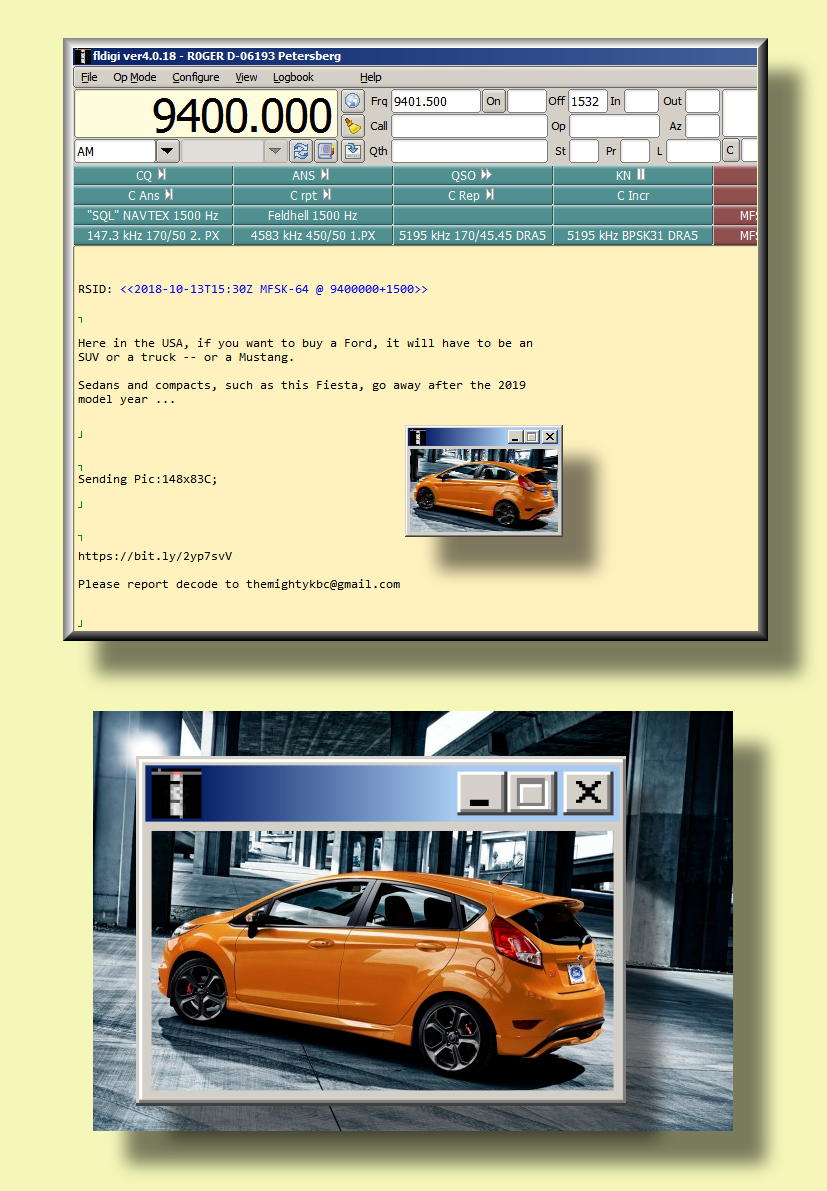 |

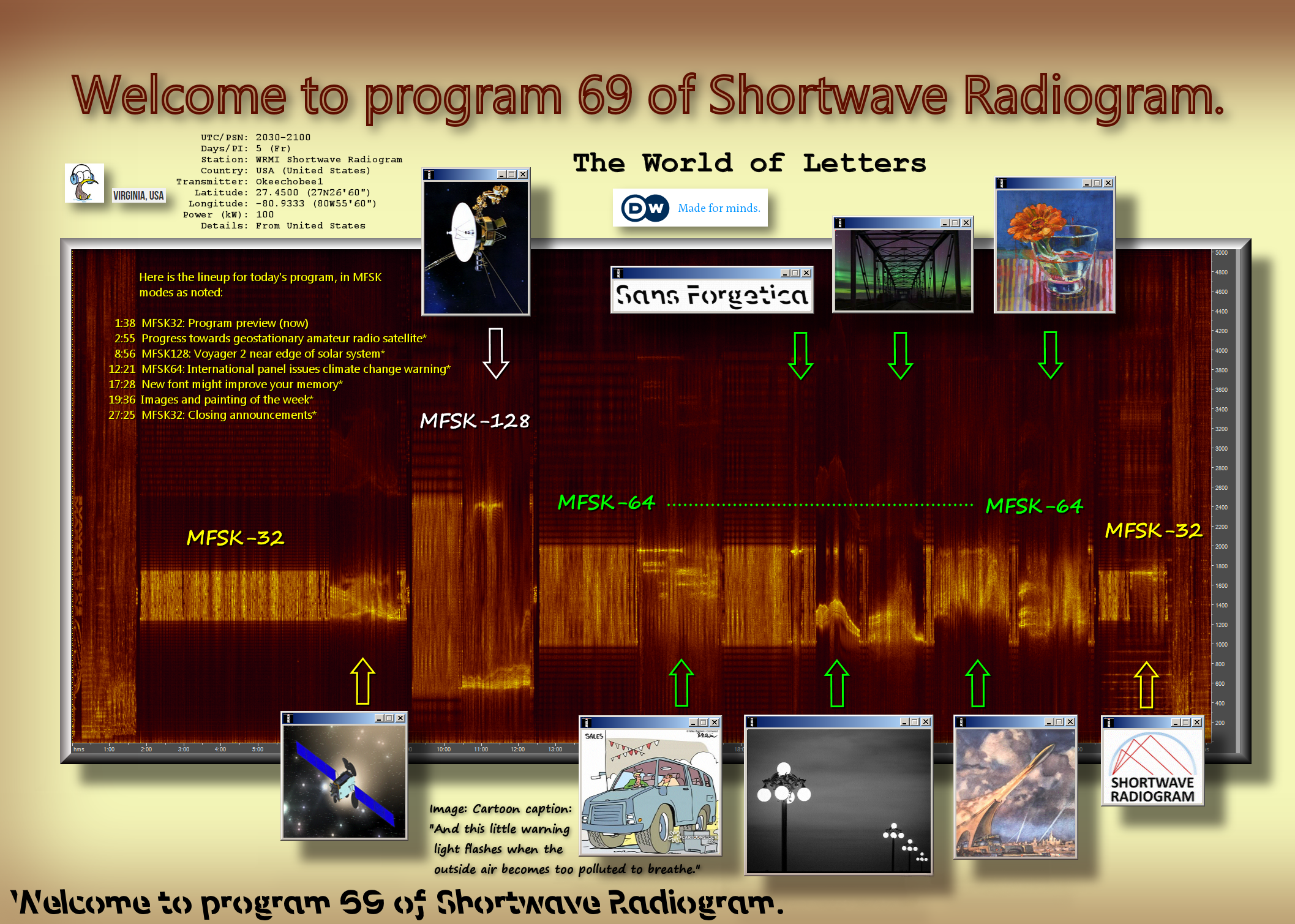
RSID: <<2018-10-13T16:01Z
MFSK-32 @
9400000+1500>>
Welcome to program 69 of Shortwave Radiogram.
I'm Kim Andrew Elliott in Arlington, Virginia USA.
Here is the lineup for today's program, in MFSK modes as noted:
1:38 MFSK32: Program preview (now)
2:55 Progress towards geostationary amateur radio satellite*
8:56 MFSK128: Voyager 2 near edge of solar system*
12:21 MFSK64: International panel issues climate change warning*
17:28 New font might improve your memory*
19:36 Images and painting of the week*
27:25 MFSK32: Closing announcements*
* with image(s)
Please send reception reports to
radiogram@verizon.net
And visit http://swradiogram.net
Twitter:
@SWRadiogram
From ARRL.org
AMSAT-DL Symposium Hears Update on Es'hail-2 Geostationary
Satellite
4 October 2018
Progress toward the launch of the Es'Hail-2 geostationary Amateur
Radio satellite was reported as AMSAT-DL held its annual
symposium on September 29 at the Institute for Environment and
Future Research (IUZ) Bochum Observatory in Germany. Es'hail-2 is
set to go into space this fall or early winter aboard a SpaceX
vehicle; a specific launch date is not available. AMSAT-DL
President Peter Gülzow, DB2OS, and Achim Vollhardt, DH2VA,
reported that AMSAT-DL recently finalized the individual
components for the Es'hail-2 ground station in Doha, Qatar.
"Last week, we finished the work and made the equipment ready to
ship," Gülzow said. The components are to be installed in Qatar
in the near future. A second facility at the Qatar Amateur Radio
Society (QARS) in Doha will serve as a backup, while a third
ground station will be installed at Bochum Observatory.
Es'Hail-2 will offer two AMSAT-DL-designed Phase 4 Amateur Radio
transponders operating in the 2.4 GHz and 10.450 GHz bands. A 250
kHz bandwidth linear transponder is intended for conventional
analog operation, while an 8 MHz bandwidth transponder will
provide experimental digital modulation schemes and DVB digital
amateur television (DATV). Both transponders will be equipped
with antennas capable of providing full coverage of about
one-third of Earth's surface.
"We hope to be able to present live broadcasts in DATV at the
next HAM RADIO [in Friedrichshafen], June 21 - 23," Gülzow said.
AMSAT-DL has been offering technical assistance on the Es'Hail-2
project. The commercial Qatari satellite will provide the first
Amateur Radio geostationary communication and will be capable of
linking amateurs from Brazil to Thailand.
Gülzow will deliver a presentation, "Es'hail-2 and its Amateur
Radio Payload" at the AMSAT-UK International Space Colloquium,
October 13 - 14, as part of the Radio Society of Great Britain
Convention in Milton Keynes, England.
Colloquium presentations will be live-streamed starting October
13 at 0830 UTC. Recordings of all presentations will be posted on
the AMSAT-UK YouTube channel following the event.
http://www.arrl.org/news/amsat-dl-symposium-hears-update-on-es-hail-2-geostationary-satellite
Image: Illustration of the Es'hail 2 satellite ...
Sending Pic:199x183C;
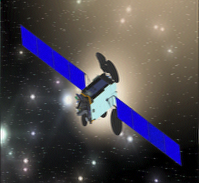
Shortwave Radiogram now changes to MFSK128 ...
RSID: <<2018-10-13T16:09Z
MFSK-128 @
9400000+1500>>
This is Shortwave Radiogram in MFSK128
Please send reception reports to
radiogram@verizon.net
From New Atlas:
Voyager 2 shows first signs of entering interstellar space
Michael Irving
8 October 2018
After 40 years of zipping through the solar system, Voyager 2
appears to be close to leaving the neighborhood. Currently at a
distance of about 17.7 billion km (11 billion mi) from Earth, the
probe's instruments have begun picking up radiation signals that
suggest it is breaking out of the Sun's protective bubble, and
will soon join its sibling in interstellar space.
Voyager 1 and 2 were launched in 1977 before conducting a grand
tour of Jupiter, Saturn, Uranus and Neptune, where the probes
collected some of the clearest photos and data of the planets for
the time. But their job wasn't done yet - given their exit
trajectory, astronomers figured they could help study the very
boundaries of the solar system.
In a similar way to how the Earth's magnetic field creates a
shield that protects it (and us) from the deadly radiation of
space, so too does the Sun create its own bubble. Known as the
heliosphere, this huge bubble surrounds the entire solar system
and is made up mostly of "solar wind" or plasma ejected from the
Sun. Beyond that is the cold expanse of interstellar space, made
up mostly of hydrogen and helium gases.
In 2012, Voyager 1 became the first human-made object to leave
that bubble and go interstellar. Six years later and it now looks
like Voyager 2 is about to follow suit, after journeying through
the heliosheath (the very edge of the bubble) for the past
decade.
NASA has now reported that the probe's onboard instruments have
begun to detect more cosmic rays hitting the spacecraft. Since
late August, Voyager 2's Cosmic Ray Subsystem has picked up a
five percent increase in the rate of cosmic rays, while the
Low-Energy Charged Particle instrument has registered a similar
bump.
Since the heliosphere blocks many cosmic rays, this kind of
increase was expected to be seen when the craft crossed the
barrier. In fact, Voyager 1 reported a similar increase about
three months before it officially entered interstellar space.
That said, Voyager 1's journey isn't a perfect model for what the
second probe will experience. For starters, they whizzed off in
wildly different directions, so the heliosphere could be very
different in different areas. On top of that, the six-year gap
could play into things too, since the Sun's 11-year activity
cycle can cause the heliopause to swell inwards and outwards, as
though the solar system is breathing.
"We're seeing a change in the environment around Voyager 2,
there's no doubt about that," says Ed Stone, a Voyager Project
scientist. "We're going to learn a lot in the coming months, but
we still don't know when we'll reach the heliopause. We're not
there yet - that's one thing I can say with confidence."
Current estimates suggest Voyager 2 will finally enter
interstellar space in late 2019 or early 2020. It's believed that
both craft have enough power to continue transmitting data until
2025, before continuing silently outwards as symbols of human
achievement, possibly long after we're gone.
https://newatlas.com/voyager-2-interstellar-space-heliosphere/56668/
Sending Pic:169x215C;
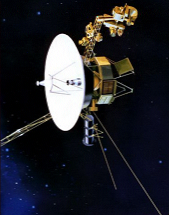
Shortwave Radiogram now changes to MFSK64 ...
RSID: <<2018-10-13T16:12Z
MFSK-64S @
9400000+1500>>
This is Shortwave Radiogram in MFSK64
Please send reception reports to
radiogram@verizon.net
VOA NEWS
Scientists Warn Catastrophic Global Warming Looming
Lisa Schlein
8 October 2018
GENEVA - A new report by the Intergovernmental Panel on Climate
Change warns the world is heating up faster than predicted. If
the pace of global warming is not scaled back drastically, the
panel says climate-related risks to human well-being, ecosystems
and sustainable development will escalate to dangerous,
unreversable levels.
Scientists of the Intergovernmental Panel on Climate Change
report global warming since pre-industrial times already has
exceeded one degree Celsius. At the current rate of greenhouse
gas emissions, it says the the level of warming will reach 1.5
degrees during the next few decades.
The report says the world needs to reach zero net emissions of
carbon dioxide by 2050 to prevent a further rise in temperature.
It warns a further increase to two degrees Celsius would greatly
escalate the number of natural disasters, accelerate the melting
of the Arctic sea ice, cause islands to disappear under rising
seas, and make it impossible to produce enough food to feed the
world's growing population.
World Meteorological Organization Secretary-General Petteri
Taalas says there is still time for people to change their
behavior to keep carbon emissions from rising. He says preventing
the global temperature from going up by one half degree would
make a huge difference in the well-being of the planet.
"One of the major issues is that there would be 420 million
people less suffering because of climate change if we would be
able to limit the warming to 1.5-degree level," said Taalas.
"And, we have certain areas in the world, which are extremely
sensitive. Small island states, Mediterranean region and also
Sub-Saharan Africa, which are already suffering and will suffer
the most in the future."
Taalas recommends several actions governments and individuals can
take to lower the world's temperature. He says fossil fuels,
which are the greatest emitter of carbon dioxide in the
atmosphere, must be phased out.
He says solar power, hydro power, wind power and other forms of
so-called green energy are available to meet peoples' energy
needs. He says more emphasis should be placed on using electric
powered public and private modes of transportation.
He tells VOA people can help save the planet by changing their
lifestyles. He points to diet as one area that could lessen the
problem.
"For example, the fact that we eat so much meat means that we are
using a fairly large fraction of our agriculture for the cattle
instead of for using vegetarian food that would be more carbon
friendly," said Taalas.
Taalas says governments have a 30-year window in which to stop
using fossil energy and limiting global warming at 1.5 degrees
Celsius. He says this is not impossible, but agrees that it is a
major challenge.
https://www.voanews.com/a/scientists-warn-catastrophic-global-warming-is-looming/4604528.html
See also:
https://newatlas.com/global-warming-ipcc-report/56678/
http://www.ipcc.ch
Image: Cartoon caption -- And this little warning light flashes
when the outside air becomes too polluted to breathe ...
Sending Pic:225x202C;

This is Shortwave Radiogram
Please send reception reports to
radiogram@verizon.net
Sans Forgetica, the new font that helps your memory
Alistair Walsh
5 Octobe 2018
Australian researchers have created a font that aids memory
recall, a Melbourne university announced this week.
The font Sans Forgetica was developed by a trio of designers and
researchers specializing in typography and behavioral science at
RMIT University in Melbourne.
The design is based on a font called Albion, but with heavy
modifications to reduce familiarity. The font is back-slanted and
includes distinctive gaps that engage the brain, improving
recall.
RMIT Behavioral Business Lab's Janneke Blijlevens said normal
fonts were very familiar.
"Readers often glance over them and no memory trace is created,"
said Blijlevens. But she warned that if a font is too outlandish
the brain struggles to process the text and the information is
not retained.
"Sans Forgetica lies at a sweet spot where just enough
obstruction has been added to create that memory retention."
The modifications force readers to spend longer on each word,
allowing the brain to engage in deeper cognitive processing.
Behavioral economist Jo Peryman said the new font would benefit
students revising for exams. "We believe this is the first time
that specific principles of design theory have been combined with
specific principles of psychology theory in order to create a
font," she said.
Experiments involving about 400 student#oritl found the font boosted
recall, albeit not substantially. In one experiment, 96
participants were asked to recall word pairs presented in three
different fonts. Participants recalled 69 percent of the word
pairs presented in Sans Forgetica compared to 61 percent for the
other fonts.
In an online experiment, 303 students took a mock multiple-choice
exam. When the text was presented in Sans Forgetica, participants
remembered 57 percent of the text, compared to 50 percent of the
surrounding text that was written in a plain Arial font.
https://www.dw.com/en/sans-forgetica-the-new-font-that-helps-your-memory/a-45765663
See also:
http://sansforgetica.rmit/
https://newatlas.com/sans-forgetica-font-memory-recall/56638/
Sending Pic:323x50;

This is Shortwave Radiogram
Please send reception reports to
radiogram@verizon.net
This week's images ...
Streetlights in Mexico. From
http://www.ginnafleming.com/scenes/
...
Sending Pic:300x235;
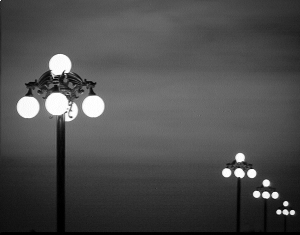
|
An aurora behind a bridge in Alberta. From
bit.ly/2EdpmI5 ...
Sending Pic:222x131C;
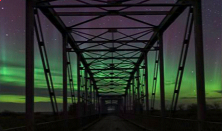
An example of futuristic illustrations from the Soviet
engineering magazine Technika Molodezhi. From
bit.ly/2IOjlAe ...
Sending Pic:194x208C;
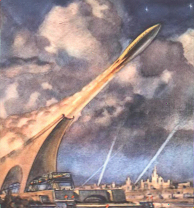
Our painting of the week is by Carol Stewart. From
https://cmstewart.com/small-paintings/ ...
Sending Pic:190x197C;

|
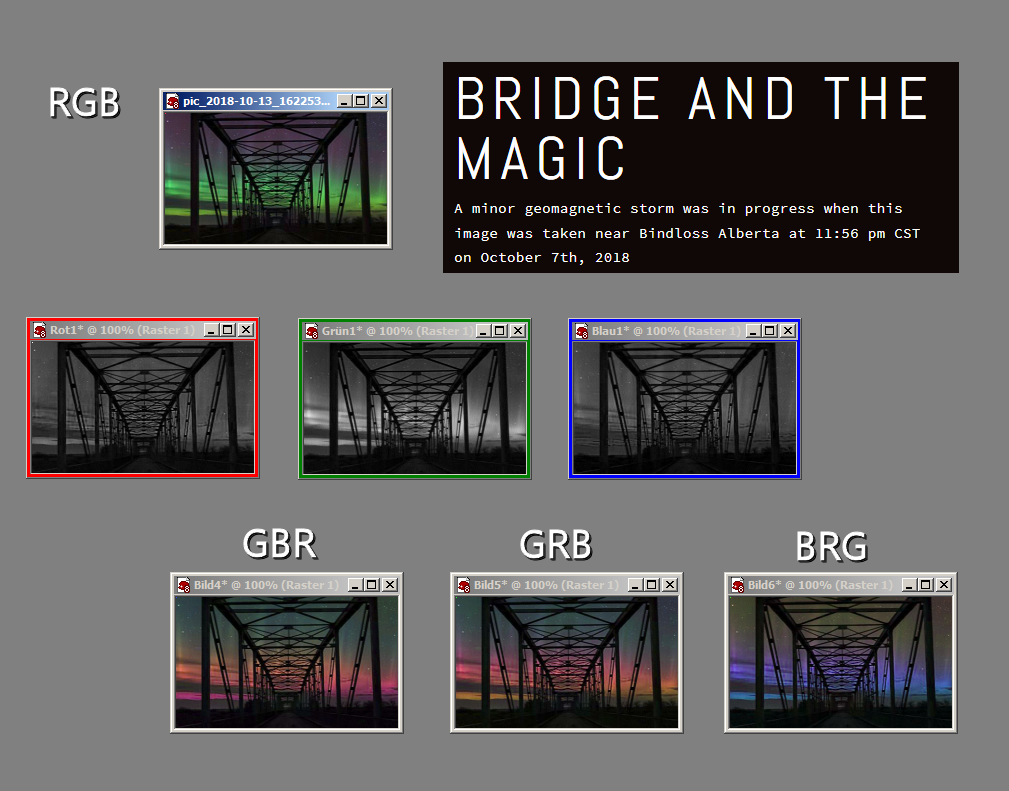
|
Shortwave Radiogram now returns to MFSK32 ...
RSID: <<2018-10-13T16:27Z
MFSK-32 @
9400000+1500>>
This is Shortwave Radiogram in MFSK32 ...
Transmission of Shortwave Radiogram is provided by:
WRMI, Radio Miami International, http://wrmi.net
and
Space Line, Bulgaria, http://spaceline.bg
Please send reception reports to
radiogram@verizon.net
And visit http://swradiogram.net
Twitter:
@SWRadiogram
I'm Kim Elliott. Please join us for the next Shortwave
Radiogram.
Sending Pic:160x120C;
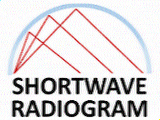
http://www.rhci-online.net/radiogram/radiogram.htm
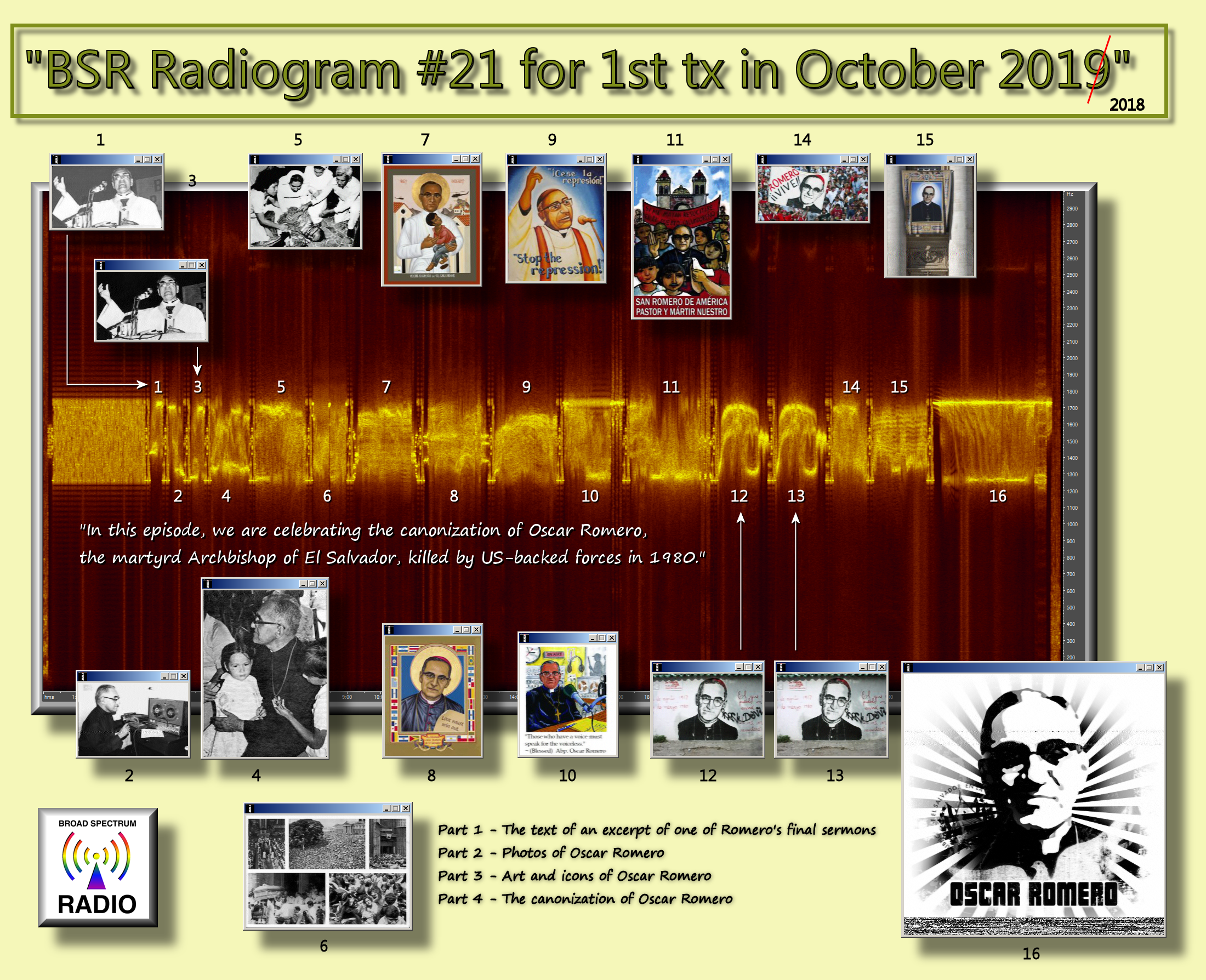

RSID: <<2018-10-15T07:30Z
MFSK-32 @
7730000+1500>>
BSR Radiogram #21
for 1st tx in October 2019
a production of James M. Branum, KG5JST
and BroadSpectrumRadio.come
In this episode, we are celebrating the canonization of Oscar Romero, the
martyrd Archbishop of El Salvador, killed by US-backed forces in 1980.
But first, just a reminder that we love QSL reports. Please send them to us at
broadspectrumradio@gmail.com or post them on the facebook for our friends at the
Shortwave Radiogram at
https://www.facebook.com/groups/567099476753304/
OK, now to the pictures, all in MFSK32 mode...
Part 1 - The text of an excerpt of one of Romero's final sermons
Part 2 - Photos of Oscar Romero
Part 3 - Art and icons of Oscar Romero
Part 4 - The canonization of Oscar Romero
Part 1 - From
http://www.latinorebels.com/2013/03/24/archbishop-oscar-romeros-last-sermon-march-14-1980/
I would like to make a special appeal to the men of the army, and specifically
to the ranks of the National Guard, the police and the military. Brothers, you
come from our own people. You are killing your own brother peasants when any
human order to kill must be
subordinate to the law of God which says, “Thou shalt not kill.” No soldier is
obliged to obey an order contrary to the law of God. No one has to obey an
immoral law. It is high time you recovered your consciences and obeyed your
consciences rather than a sinful
order. The church, the defender of the rights of God, of the law of God, of
human dignity, of the person, cannot remain silent before such an abomination.
We want the government to face the fact that reforms are valueless if they are
to be carried out at the cost of
so much blood. In the name of God, in the name of this suffering people whose
cries rise to heaven more loudly each day, I implore you, I beg you, I order you
in the name of God: stop the repression.
RSID: <<2018-10-15T07:33Z
MFSK-32 @
7730000+1500>>
Sending Pic:200x113;
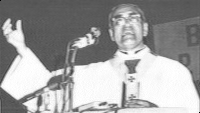
RSID: <<2018-10-15T07:33Z
MFSK-32 @
7730000+1500>>
Sending Pic:200x133;
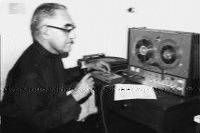
RSID: <<2018-10-15T07:34Z
MFSK-32 @
7730000+1500>>
Sending Pic:200x124;
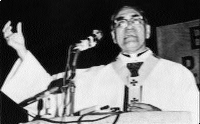
RSID: <<2018-10-15T07:35Z
MFSK-32 @
7730000+1500>>
Sending Pic:225x304;
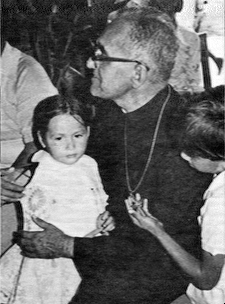
RSID: <<2018-10-15T07:36Z
MFSK-32 @
7730000+1500>>
Sending Pic:200x148C;
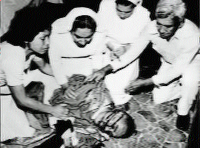
RSID: <<2018-10-15T07:37Z
MFSK-32 @
7730000+1500>>
Sending Pic:300x206;
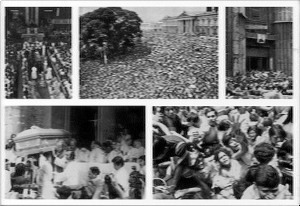
RSID: <<2018-10-15T07:39Z
MFSK-32 @
7730000+1500>>
Sending Pic:175x217C;

RSID: <<2018-10-15T07:41Z
MFSK-32 @
7730000+1500>>
Sending Pic:175x218C;

RSID: <<2018-10-15T07:43Z
MFSK-32 @
7730000+1500>>
Sending Pic:175x210C;

RSID: <<2018-10-15T07:45Z
MFSK-32 @
7730000+1500>>
Sending Pic:175x202C;
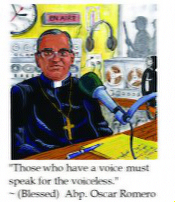
RSID: <<2018-10-15T07:47Z
MFSK-32 @
7730000+1500>>
Sending Pic:175x276C;
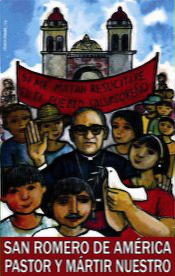
RSID: <<2018-10-15T07:49Z
MFSK-32 @
7730000+1500>>
Sending Pic:200x150C;
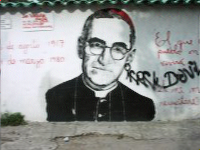
RSID: <<2018-10-15T07:51Z
MFSK-32 @
7730000+1500>>
Sending Pic:200x150C;
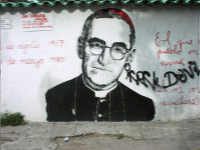
RSID: <<2018-10-15T07:53Z
MFSK-32 @
7730000+1500>>
Sending Pic:200x100C;
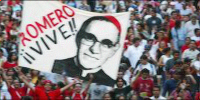
RSID: <<2018-10-15T07:54Z
MFSK-32 @
7730000+1500>>
Sending Pic:159x200C;
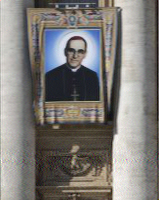
RSID: <<2018-10-15T07:56Z
MFSK-32 @
7730000+1500>>
Sending Pic:474x476;


"....Vanwege wat nogal onschuldige
gezondheidszaken moet ik het de komend twee weken kalm aan doen, en dat in een
periode dat ik het qua werk juist heel erg druk heb. Ik moet om die reden twee
uitzendingen van Slow Scan Radio overslaan."
"....I am sorry to say that because of some
minor health problems, I had to cancel this week’s and next week’s Slow Scan
Radio (October 3 and October 10)."
